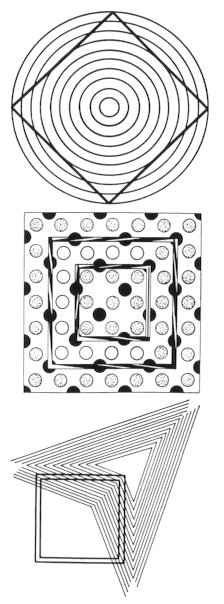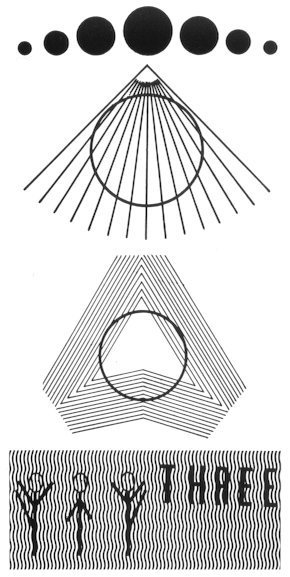(1) Illusion on distortion of shapes
A straight line is influenced visually when there
is another line intersecting the straight line from the oblique direction.
In this case, the straight line looks more deformed (bent) when the number
of the intersecting lines and the crossing angle is increased. This phenomenon
is even better understood using parallel lines (Figs. 301-306).
In addition, the original squares become hardly seen as a square when a
background is specially designed as shown in Figures 304-306. Its application
is shown in Figure 310. Curved lines are also influenced similarly (Figs.
308-310).
Figure 307 shows that an imaginary line looks curved
differently from the examples above. In other words, all the straight lines
which touch the seven circles look bent. This is because these lines are
recognized as a curved line touching the upper boundaries of these circles.

304
305
306
|
|

307
308
309
310
|
|
NEXT
CONTENTS